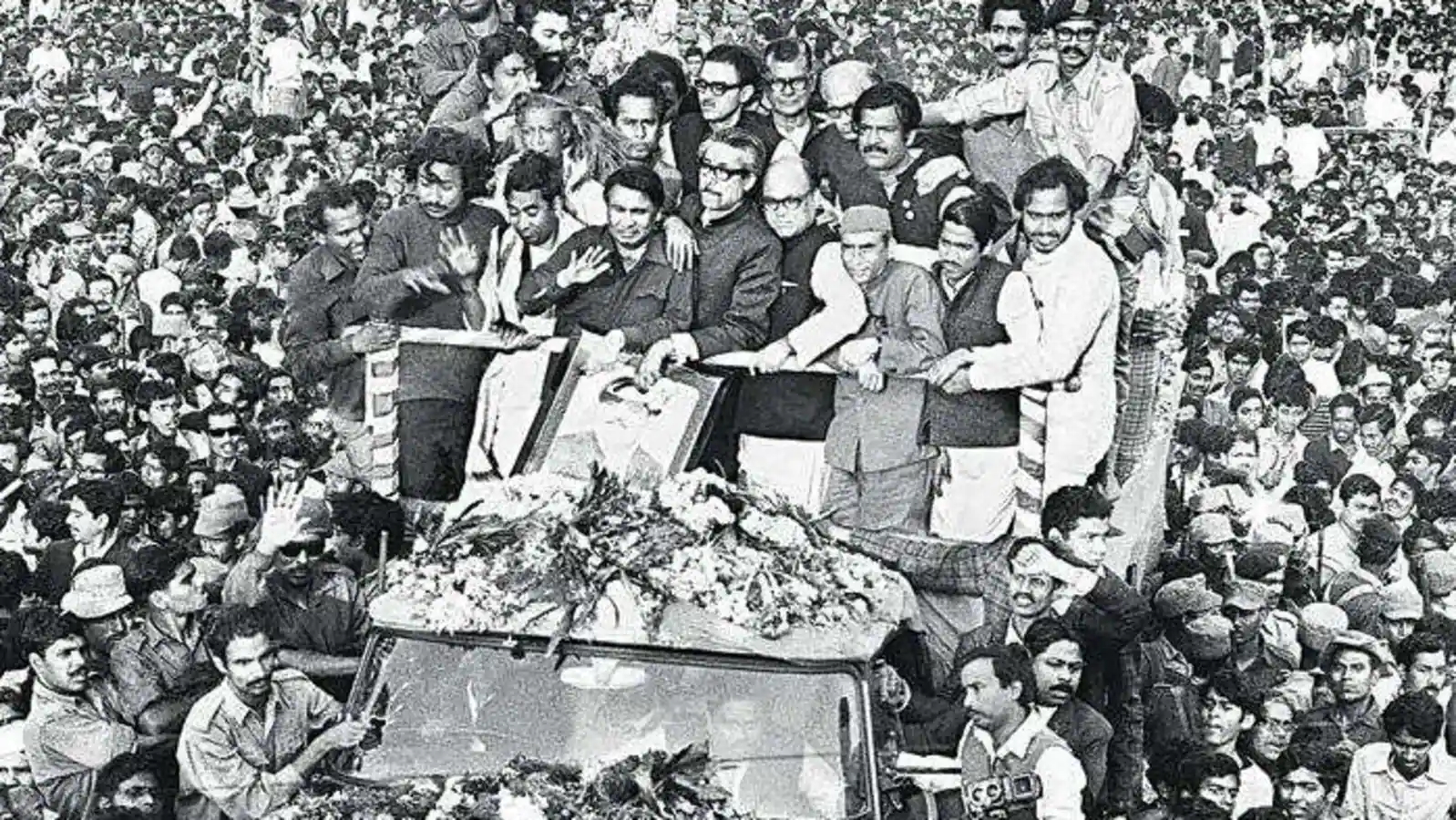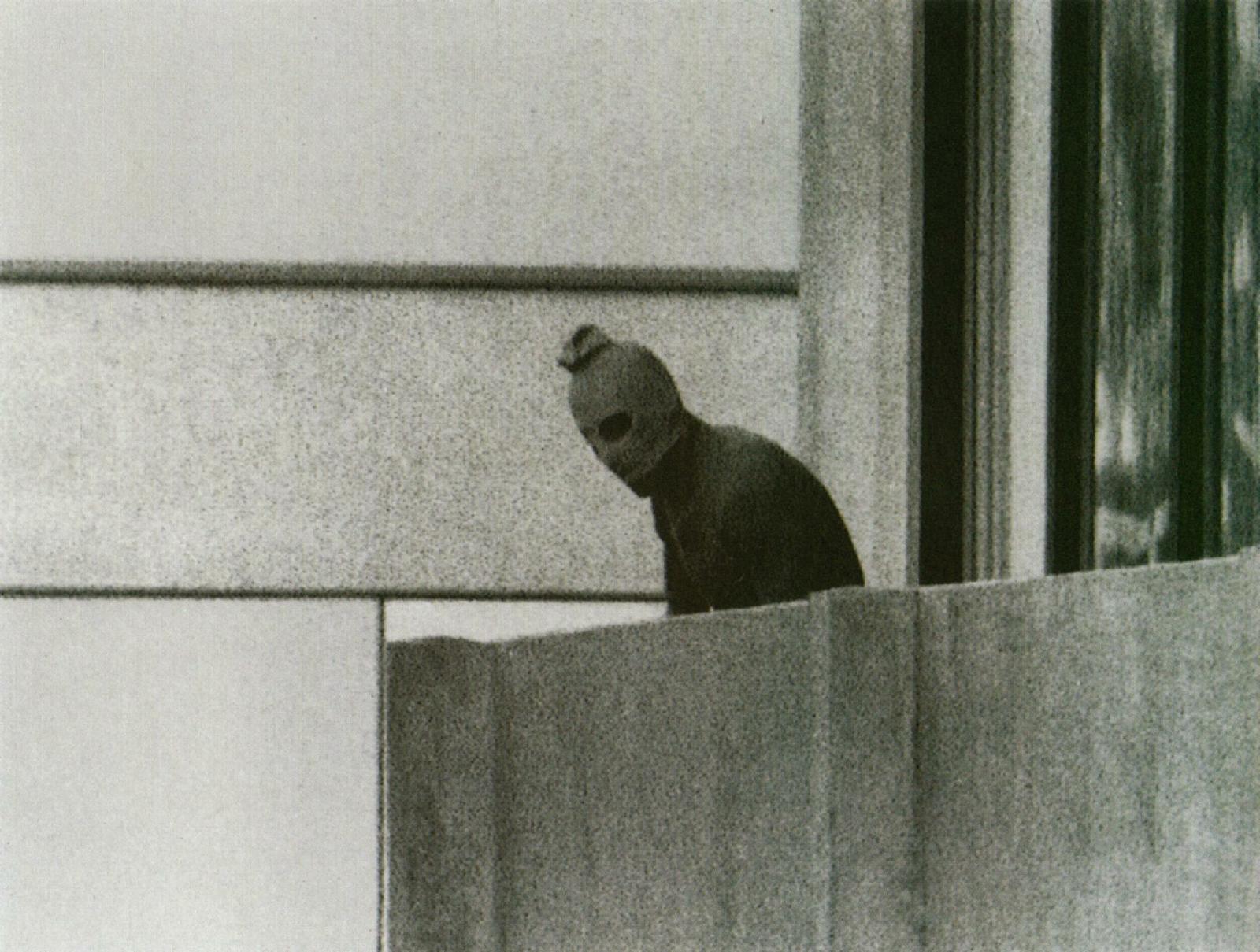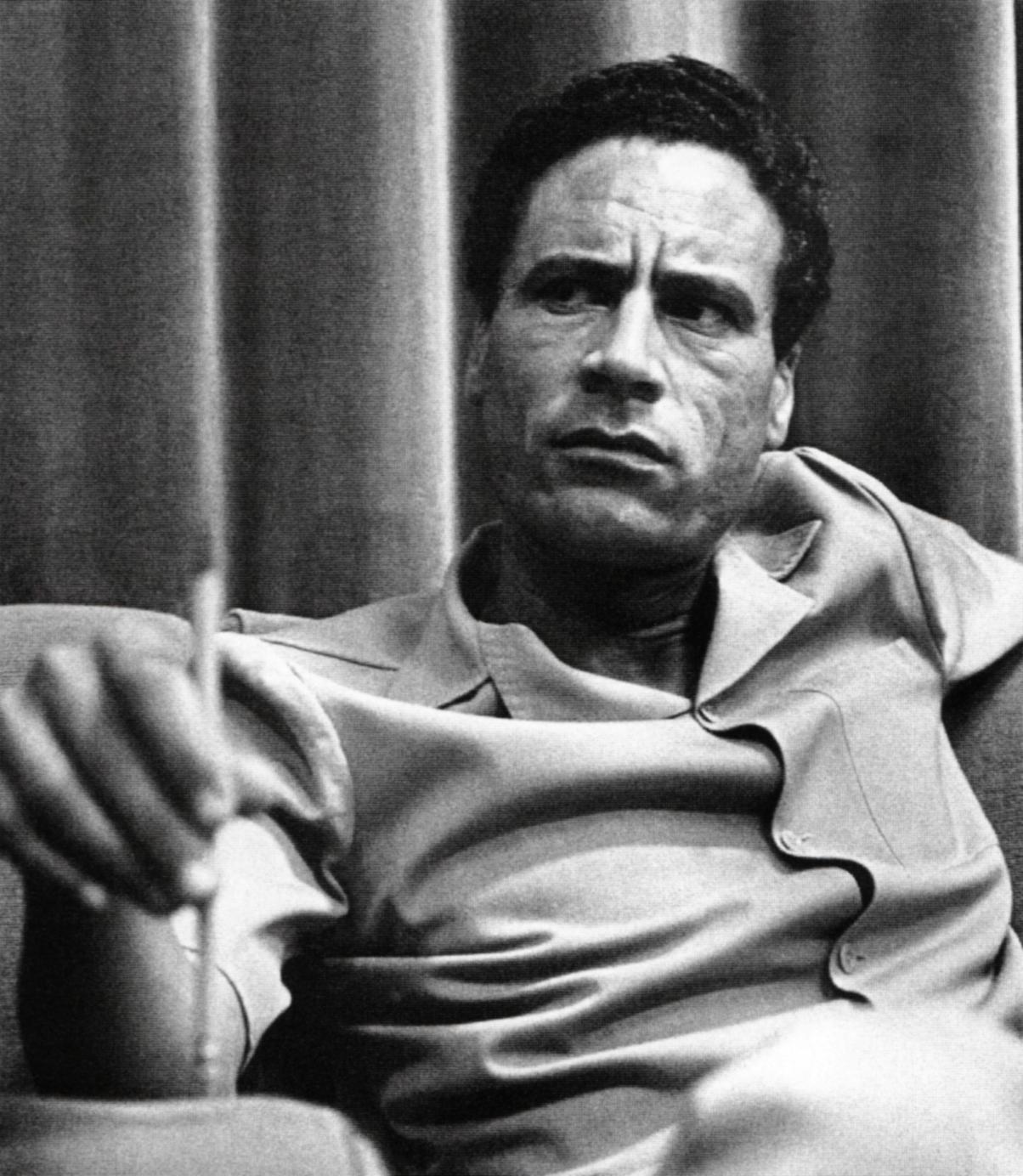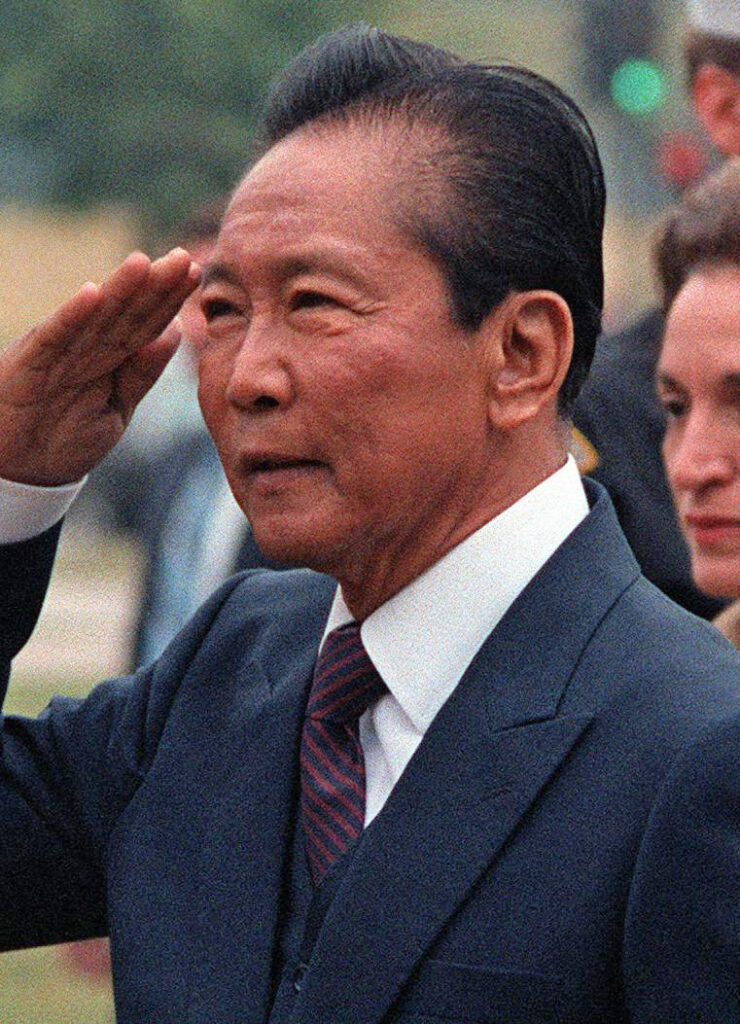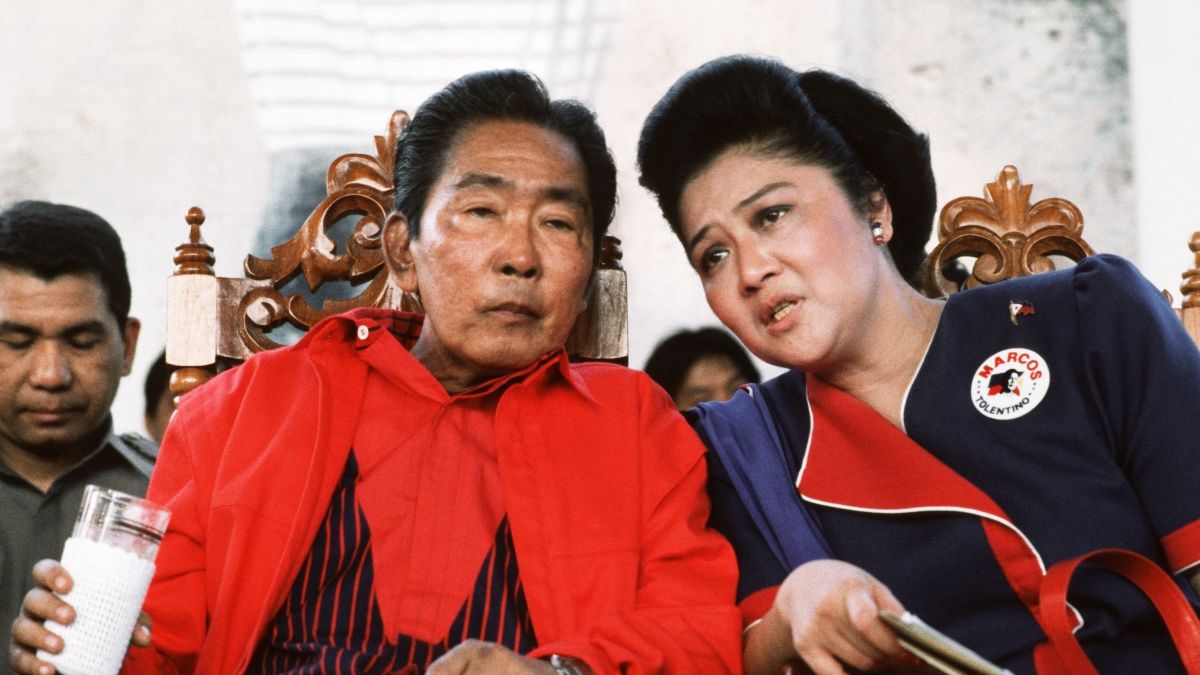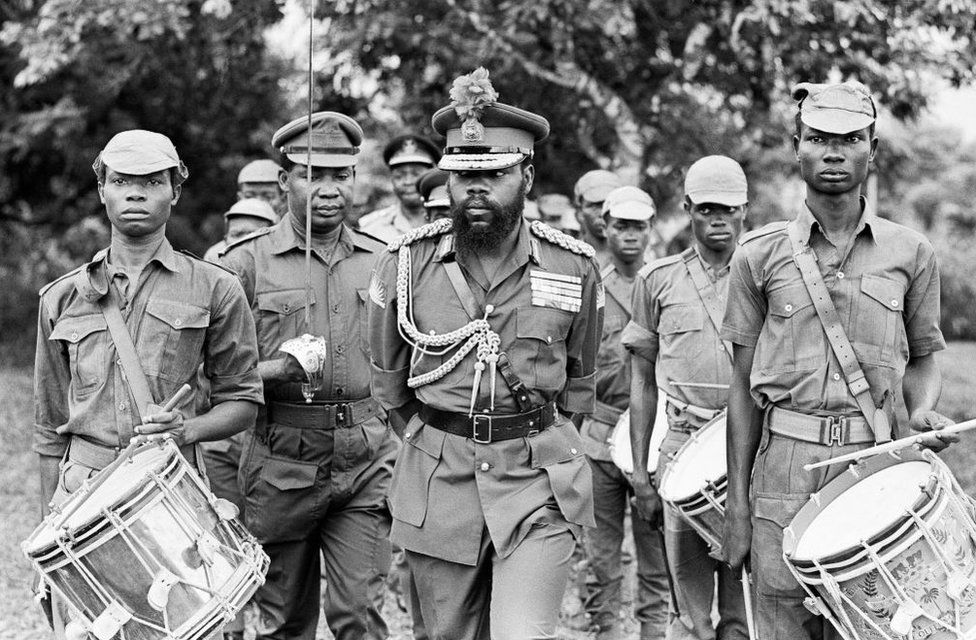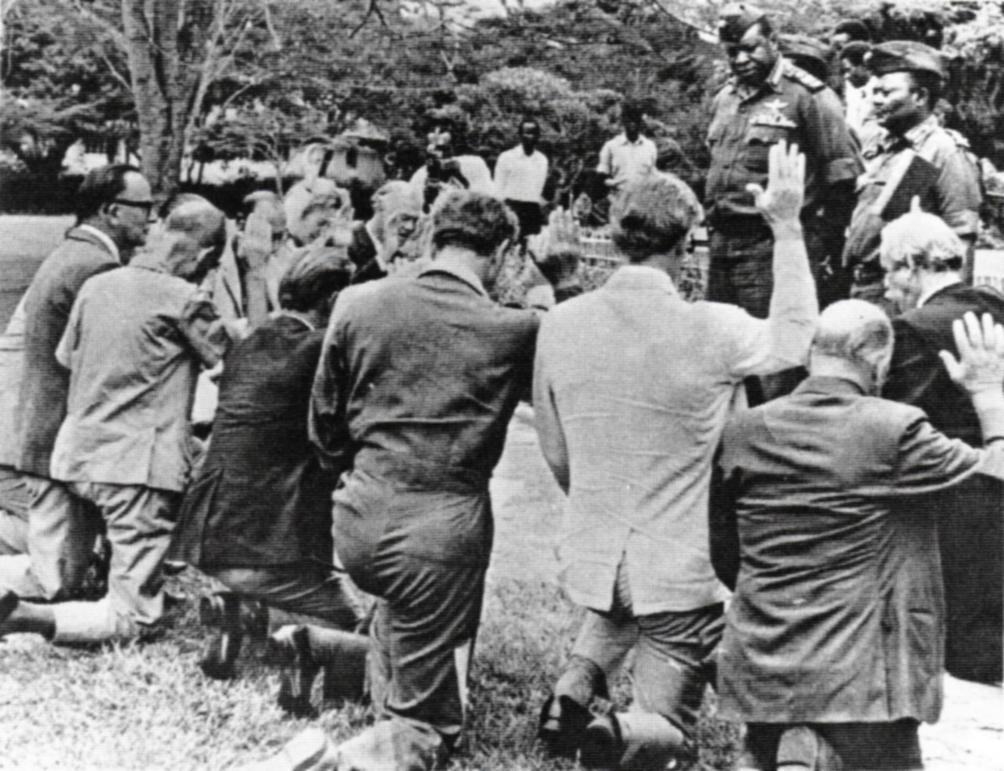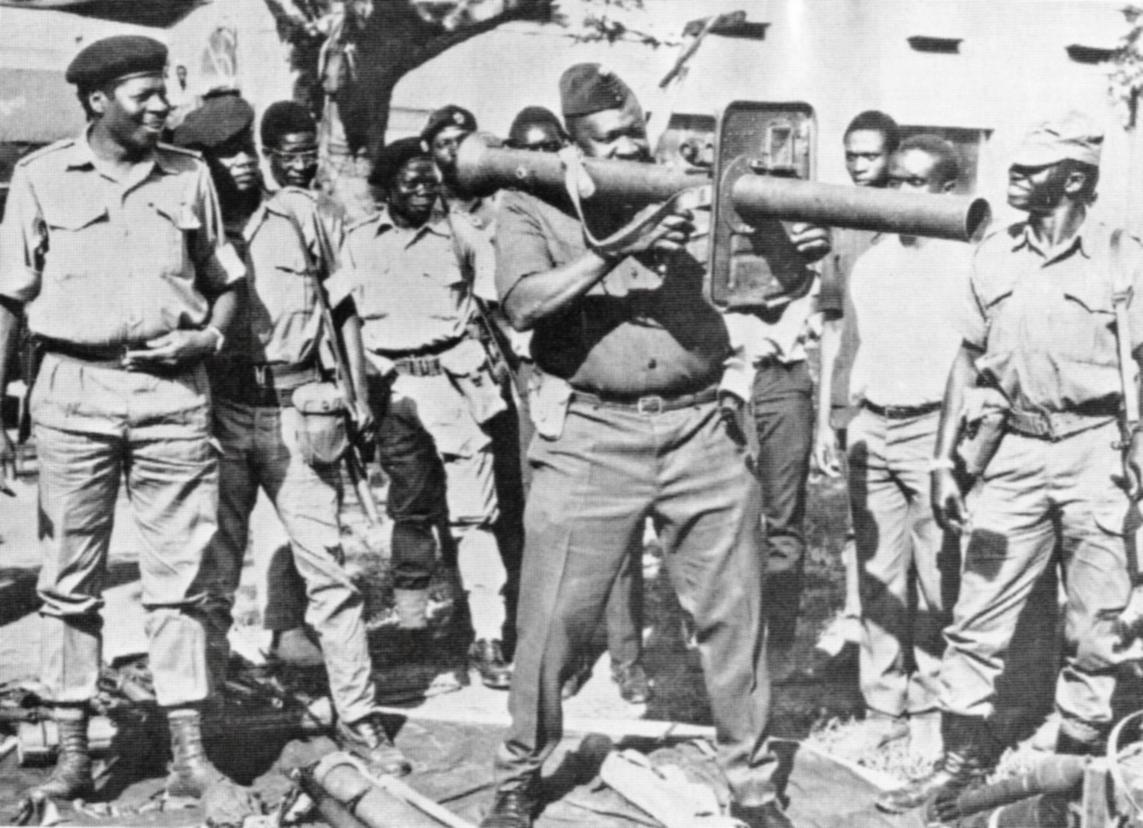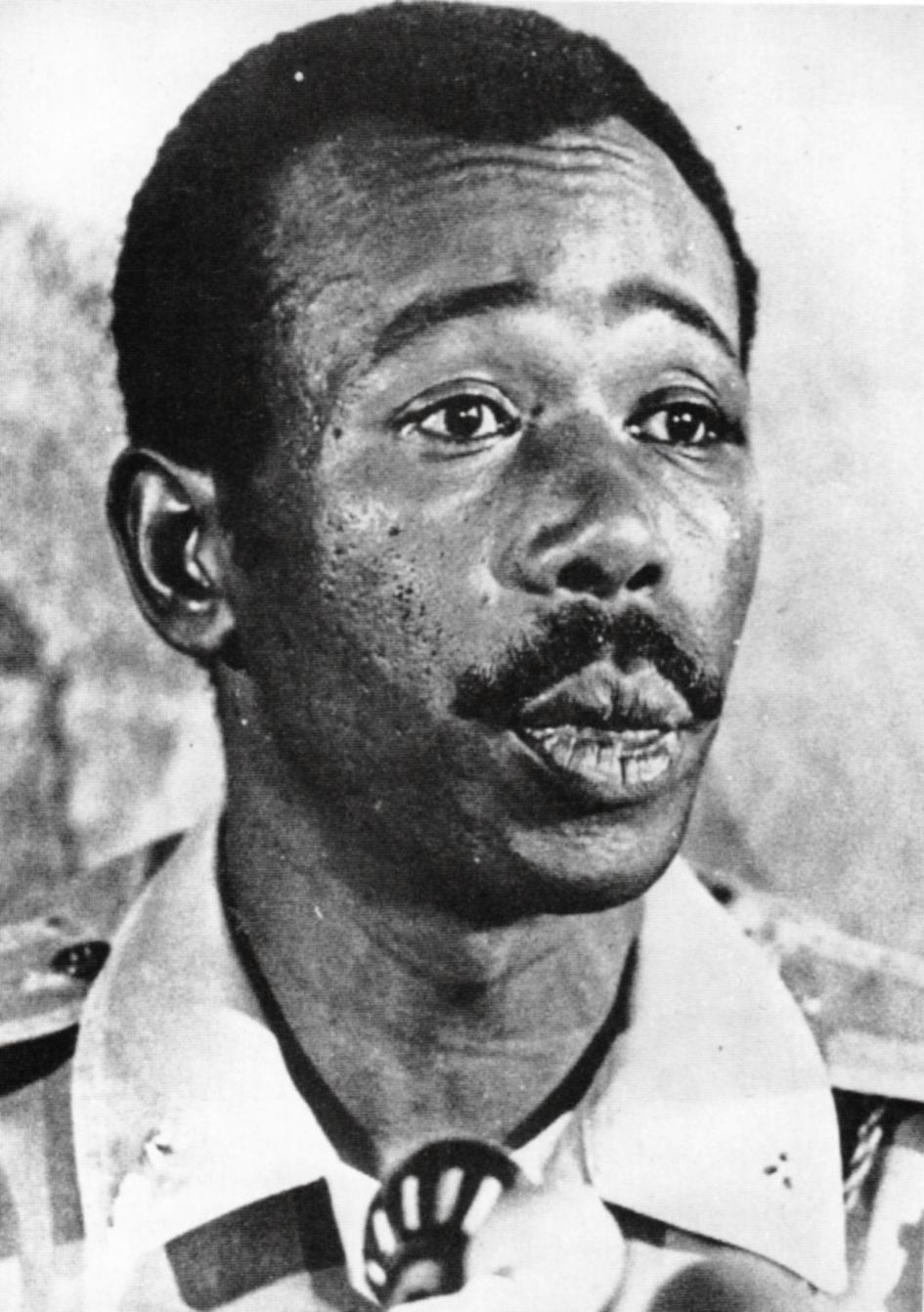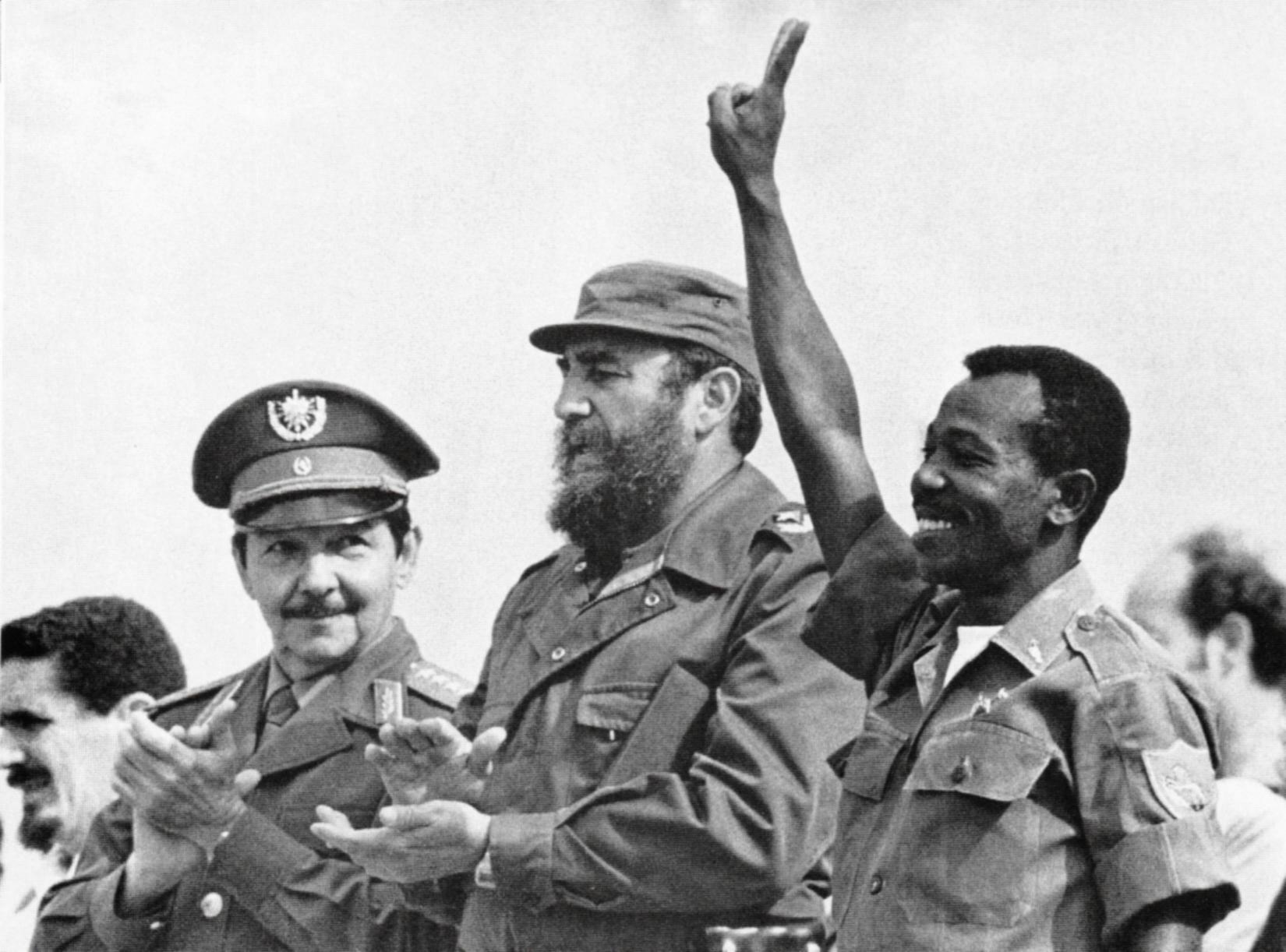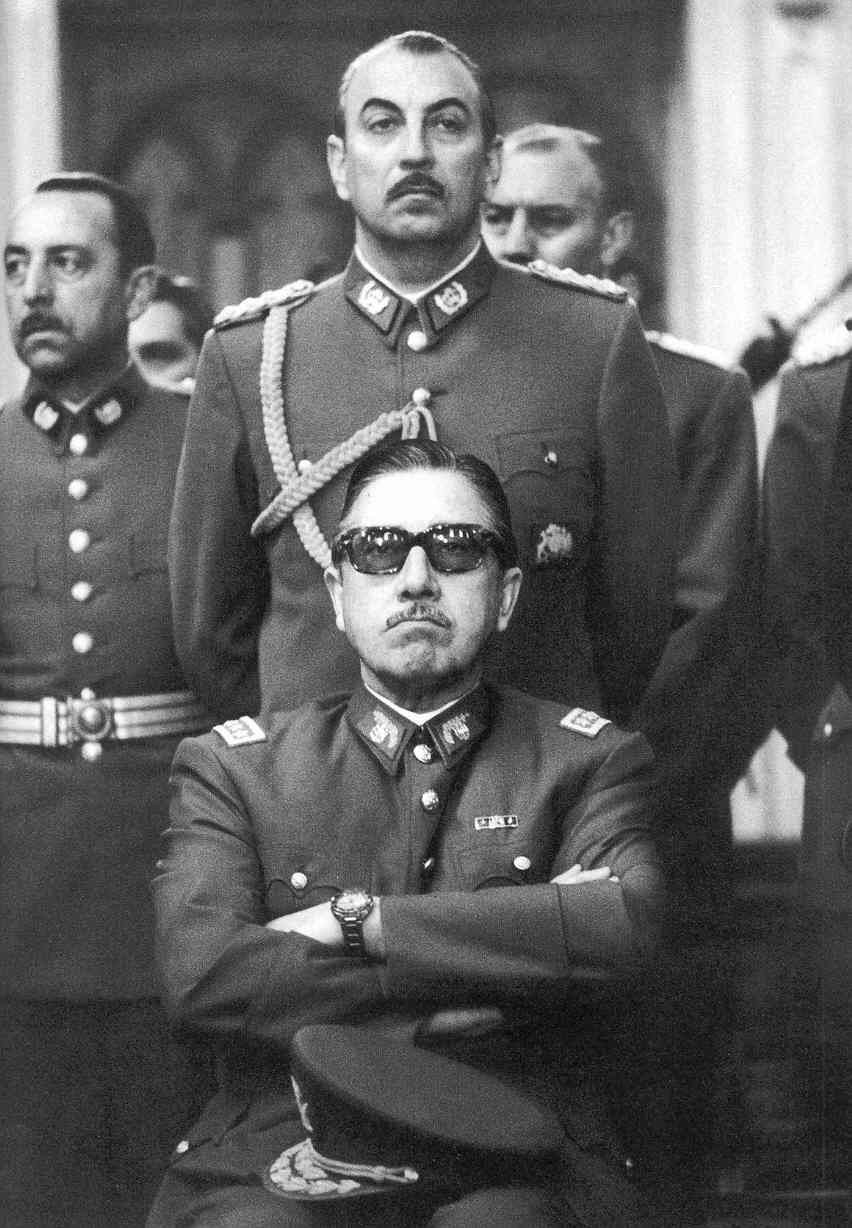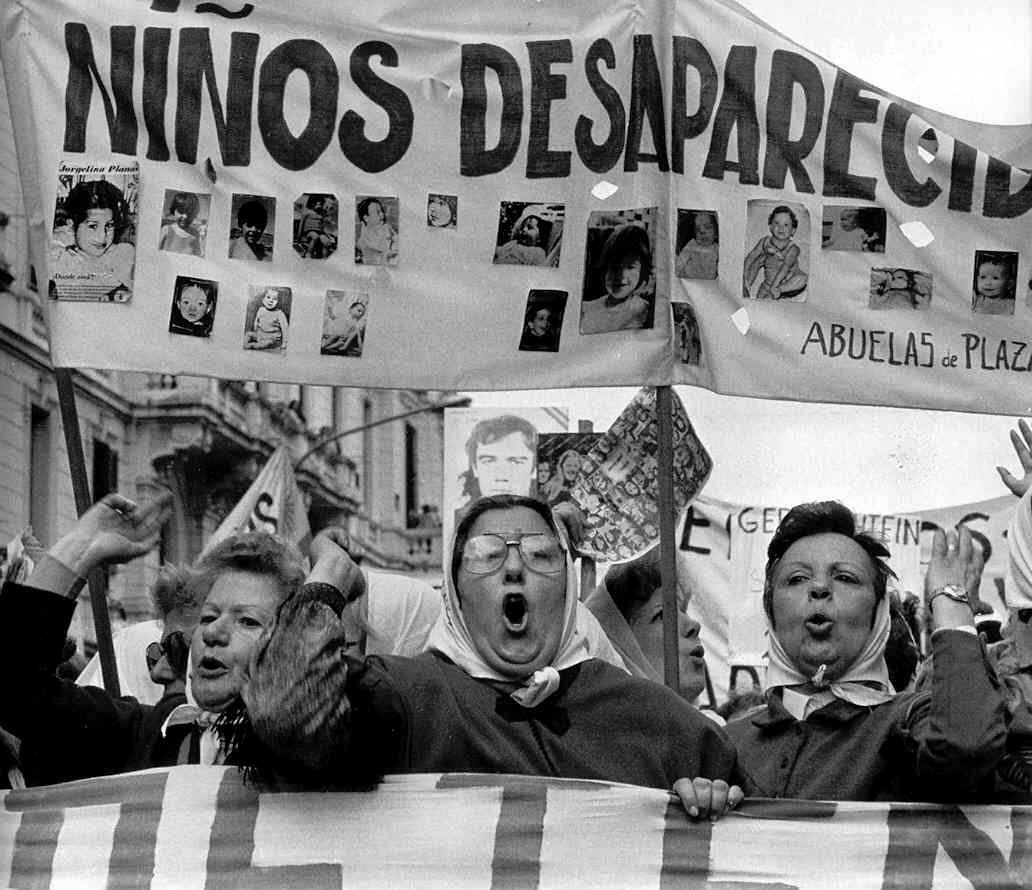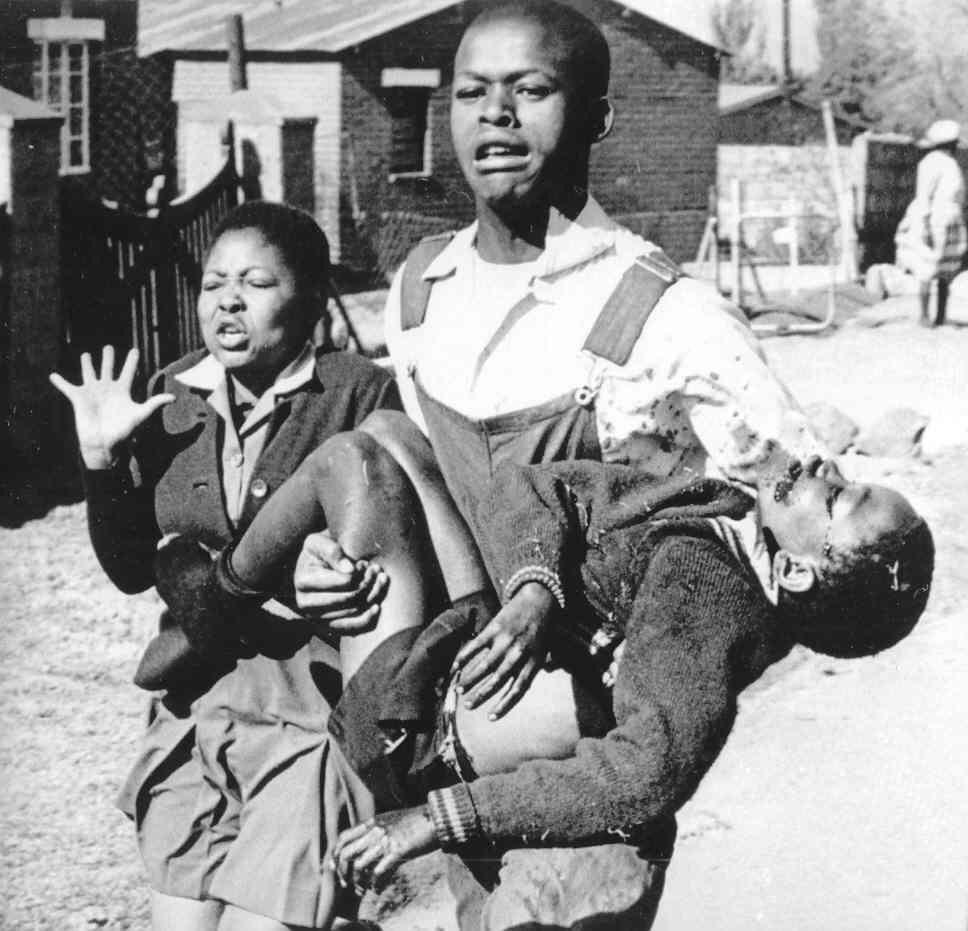19. THE SETTLING IN OF THE COLD WAR


SERIOUS PROBLEMS ARISE ELSEWHERE
 The Indo-Pakistani War of 1971
The Indo-Pakistani War of 1971
 Political turmoil in the Middle East
Political turmoil in the Middle East
 Greek and Turkish Cypriot hatreds flare
Greek and Turkish Cypriot hatreds flare
up again (1974)
 Liberal democracy in retreat in the Third
Liberal democracy in retreat in the Third
World
 South Africa ... and its deep racial
South Africa ... and its deep racial
tensions
 A bright spot in the dark world: Mother
A bright spot in the dark world: Mother
Teresa in Calcutta
THE INDO-PAKISTANI WAR OF 1971 |
(March-December 1971)
| When
British India was turned over to Asian locals, the extreme western and
eastern portion, heavily Muslim in culture, were given their own
independence as the state of Pakistan. But the link of Islam was
not enough to keep together the two regions (separated by 1000 miles,
with the state of India between them). The Punjabi culture of
West Pakistan was Middle Eastern – Arabic. The Bengali culture of
East Pakistan was Southeast Asian. The government of Pakistan,
including the army, was dominated by Arabs from the West, even though
the population of the East greatly exceeded that of the West. In the December 1970 Pakistani elections, Zulfiqar Ali Bhutto and his Pakistan People's Party won 88 of the 144 seats held by West Pakistan. But in East Pakistan (on the opposite side of India), Sheikh Mujib-ar-Rahman and his Awami Leage won 167 of East Pakistan's 169 seats ... deeply indicative of the social-cultural and thus political divide between the two Pakistans (East and West). Then Pakistani President (and dictator) Muhammad Yahya Khan shut down the National Assembly and arrested Sheikh Rahman ... causing rebellion to break out in East Pakistan. This then brought a stiff reaction from the national government ... which on the following March 25th, sent soldiers (mostly West Pakistani Muslims) into East Pakistan to begin the program of bringing East Pakistan back under governmental control. Consequently, in April of 1971 Awami leaders declared the independence of the eastern portion of Pakistan as the new state of Bangladesh. But Khan's program immediately turned into a campaign of terror against the population of East Pakistan, involving the rape, beating and ultimately massacre of civilians (actual numbers are highly disputed ... though certainly they numbered in the millions) which in turn drove ten million East Pakistanis (future Bangladeshis) into India. |
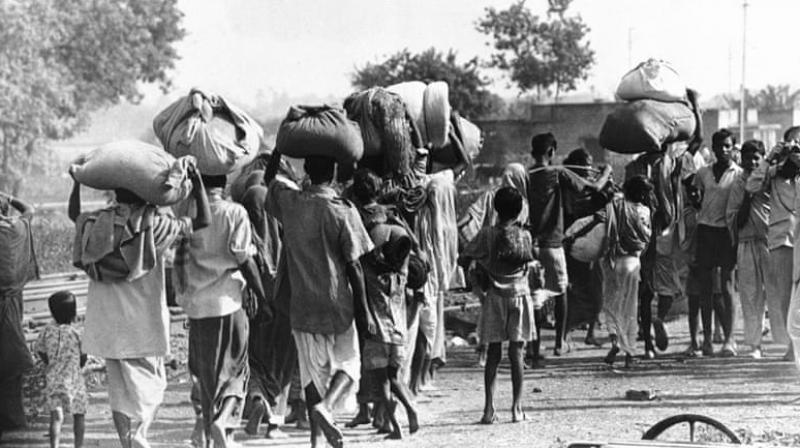
East Pakistanis (Bangladeshis) fleeing East Pakistan (Bengal Province) - 1971
| After
much hesitation (Indian Prime Minister Indra Gandhi was not sure of
what involvement in the matter might lead to in larger terms), Gandhi
had enough ... and
ordered a military assault into East Pakistan (former Bengal Province)
to stop the carnage. The action began on December 3, 1971 ... and within thirteen days, the Indian army brought the Pakistani army to full defeat (December 16th) ... also birthing the newly independent nation of Bangladesh. |
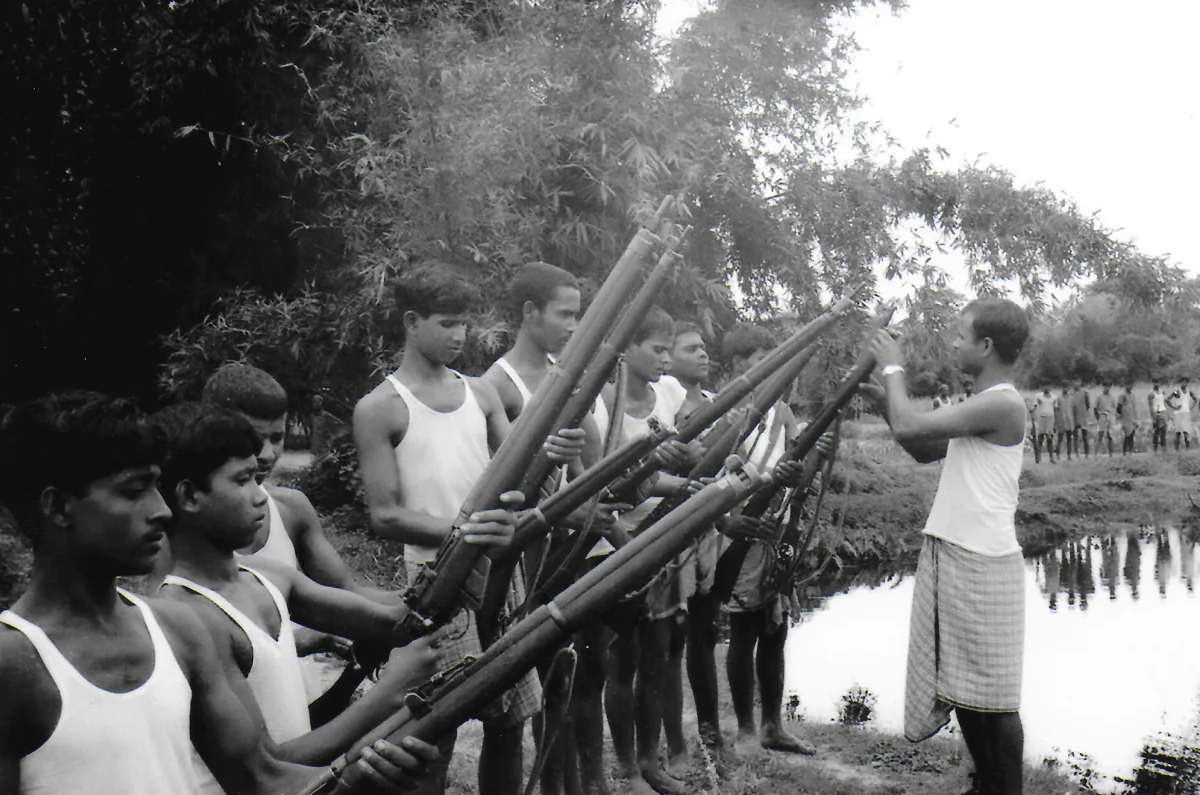
Largely Hindu East Pakistani rebels (Mukti Bahani)
training to fend off a largely Muslim West Pakistani military ... in response to a regime of terror begun in March of that year
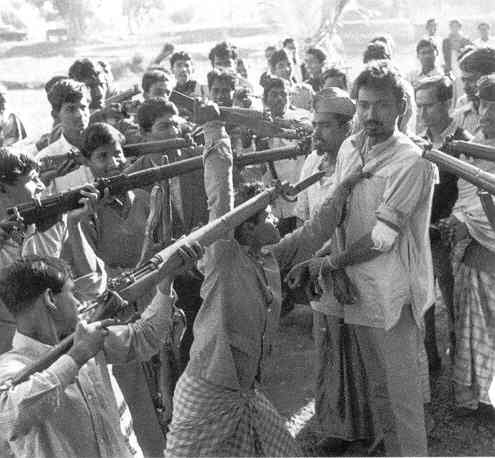
East Pakistani Bengals holding
a West Pakistan Punjabi
supposedly loyal to the Western government
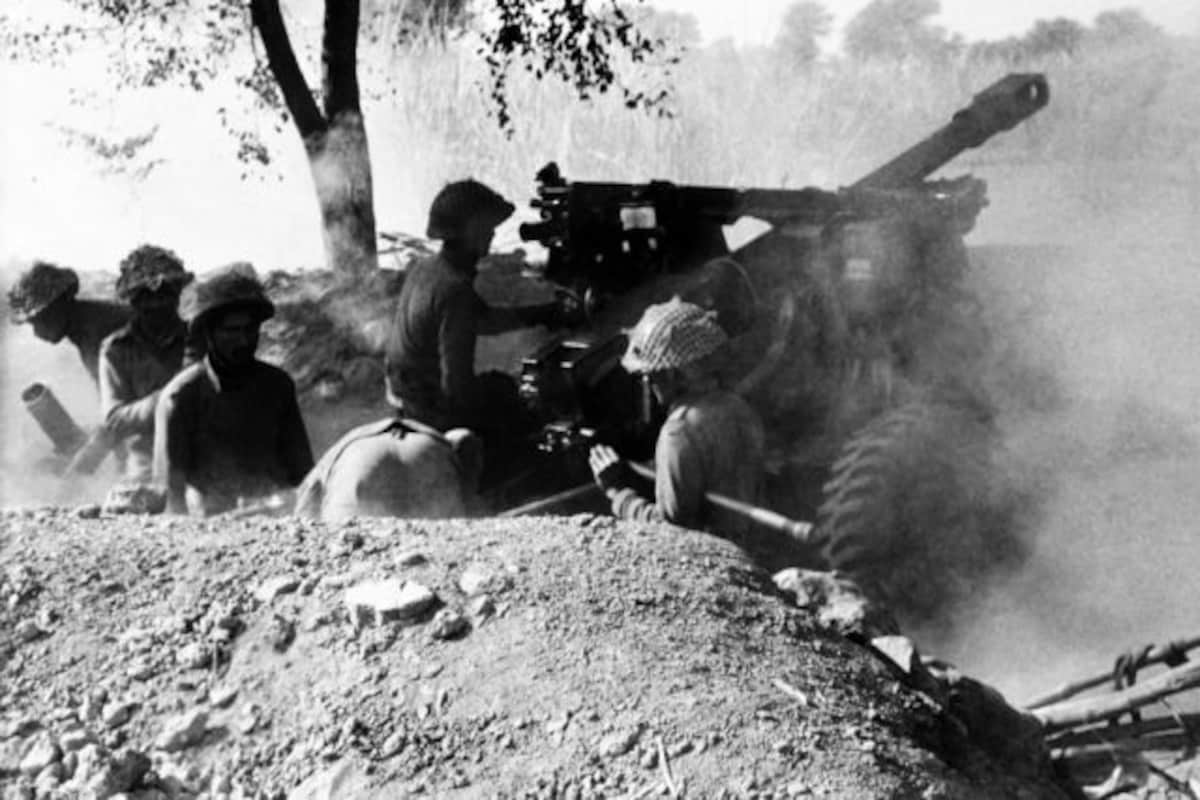
Indian artillery firing on Pakistani positions - December 1971
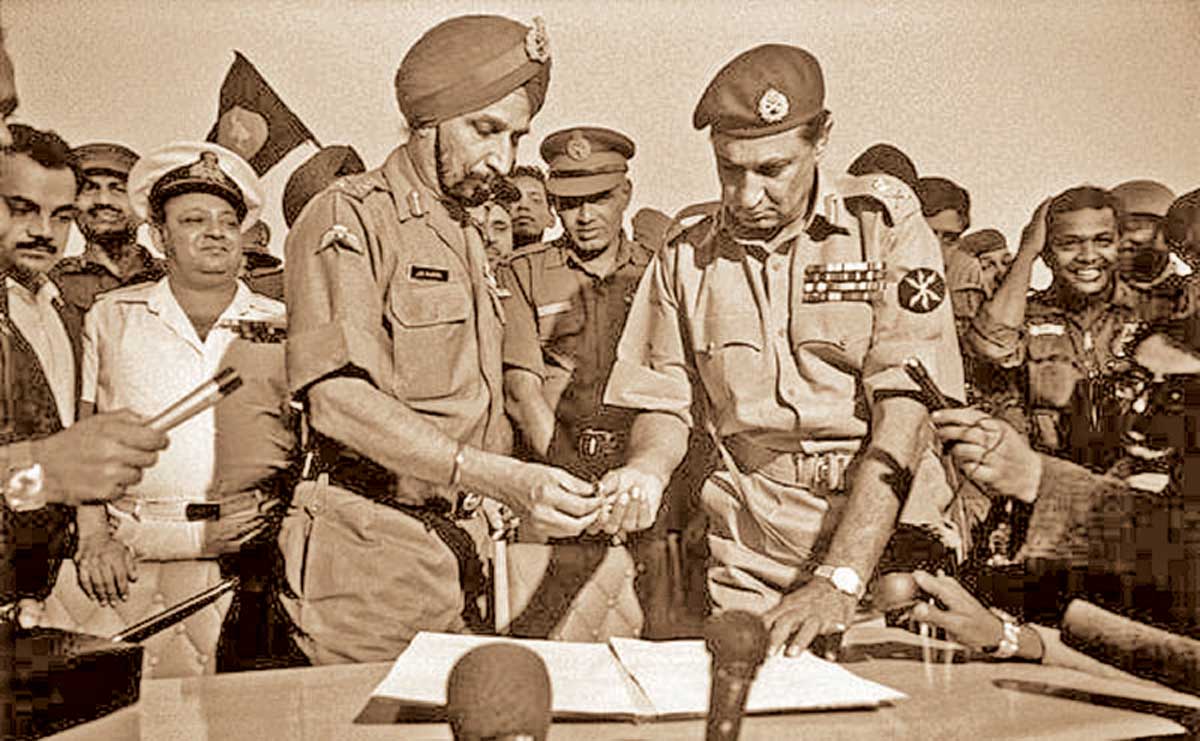
Pakistani General Nianzi signing a document of surrender in Dhaka ...
thus agreeing to the lost of "East Pakistan" (and thus now-independent "Bangladesh")
Bangladeshis celebrating their newly acquired national independence
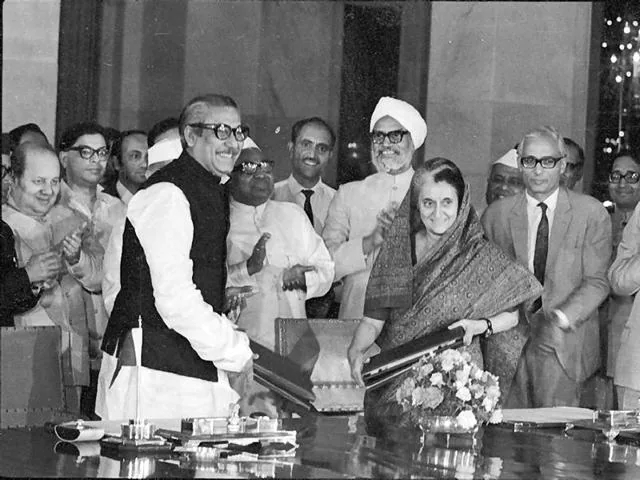
Indian Prime Minister Indira Gandhi signs an agreement
with Bangladeshi Prime Minister Sheik Mujibur Rahman - May 16, 1974
POLITICAL TURMOIL IN THE MIDDLE EAST |
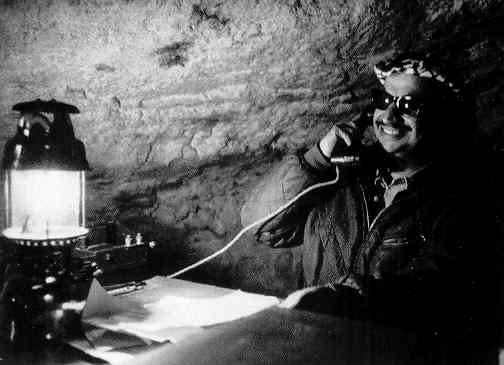
Yasser Arafat conducting
fedayeen operations from a cave along the Israeli border –
1970
Tragedy occurs when Middle East hostilities spill over into the Munich Olympic Games - 1972
Masked Palestinian terrorist
- part of a group that seized Israeli athletes at the Munich Olympic Games
- 1972. 7
Israeli hostages and 5 Palestinian abductors were killed at
the Munich
airport as the Palestinians tried to leave Germany
Libya comes under the bizarre dictatorship of Muammar Gaddafi ... who has aspirations of becoming the most important politician in the Middle East
1972: Col. Muammar
Gaddafi, three years after his seizing power in Libya
GREEK AND TURKISH CYPRIOT HATREDS FLARE UP AGAIN |
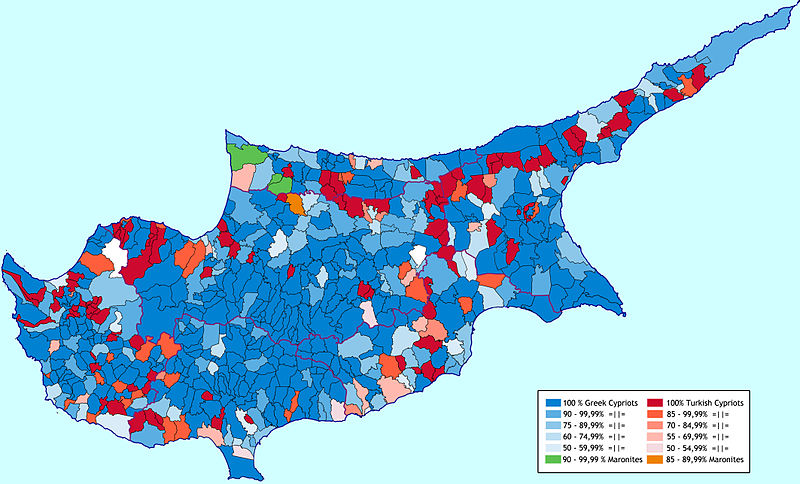
Cyprus contained a confusing
blend of Greek and Turkish ethnic communities (1960 census map) living together cautiously
because of a tradition of Greek-Turkish hostilities (though both were
NATO
partners)
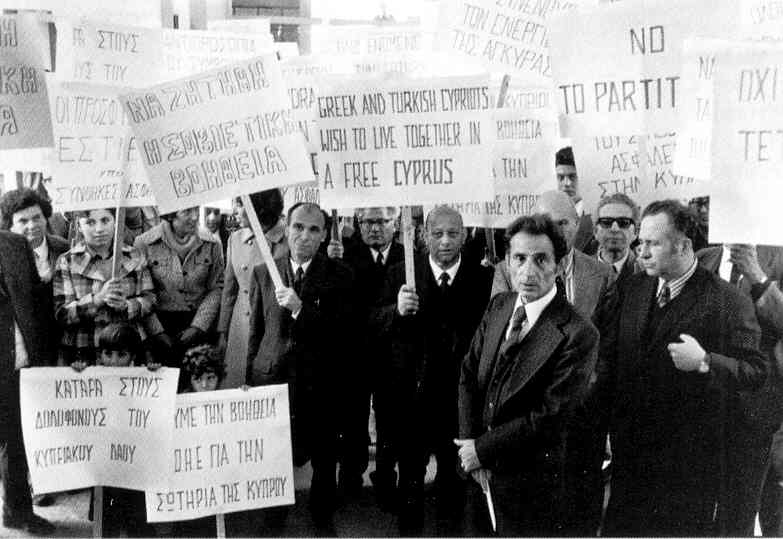
Greeks protesting the growing
nationalism drawing Greeks and Turks into hostilities
in Cyprus –
1974

The resultant division of Cyprus into two distinct political entities
LIBERAL DEMOCRACY IN RETREAT IN THE THIRD WORLD |
For instance, there is the slide into dictatorship of the Philippines ... the supposed master showpiece of the American democratic legacy in Asia!
Ferdinand Marcos imposed
martial law in the Philippines in January of 1973. He held power from 1965 until deposed in 1986 ... moving the country from relative prosperity to deep economic hardship
Ferdinand Marcos with his wife Imelda. They may have stolen as much as $10 billion from the Philippine public treasury to finance their wildly extravagant lifestyle
Africa – rather than becoming
a continent of post-colonial democracy – is becoming the setting
for increasingly brutal regimes
Nigeria becomes the setting for a brutal civil war (1967-1970)
in which the Nigerian government kills over 1 million Ibo tribesmen when they attempted to split from multi-ethnic Nigeria and form their own state of Biafra
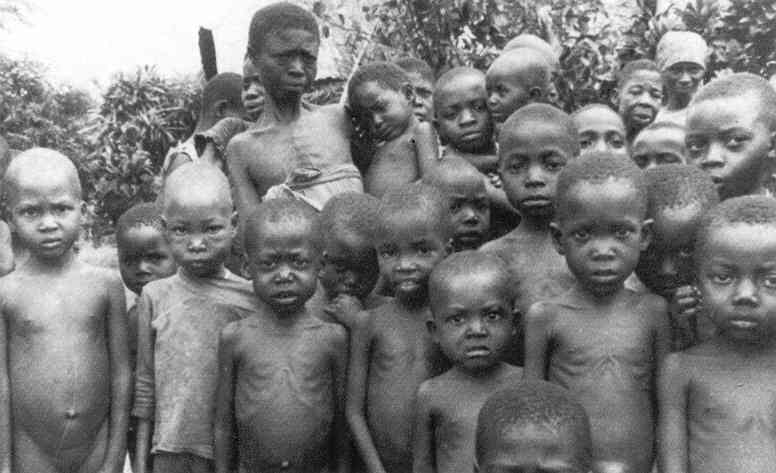
Emeka Odumegwa Ojukwu leading the Biafran rebellion - June 1968
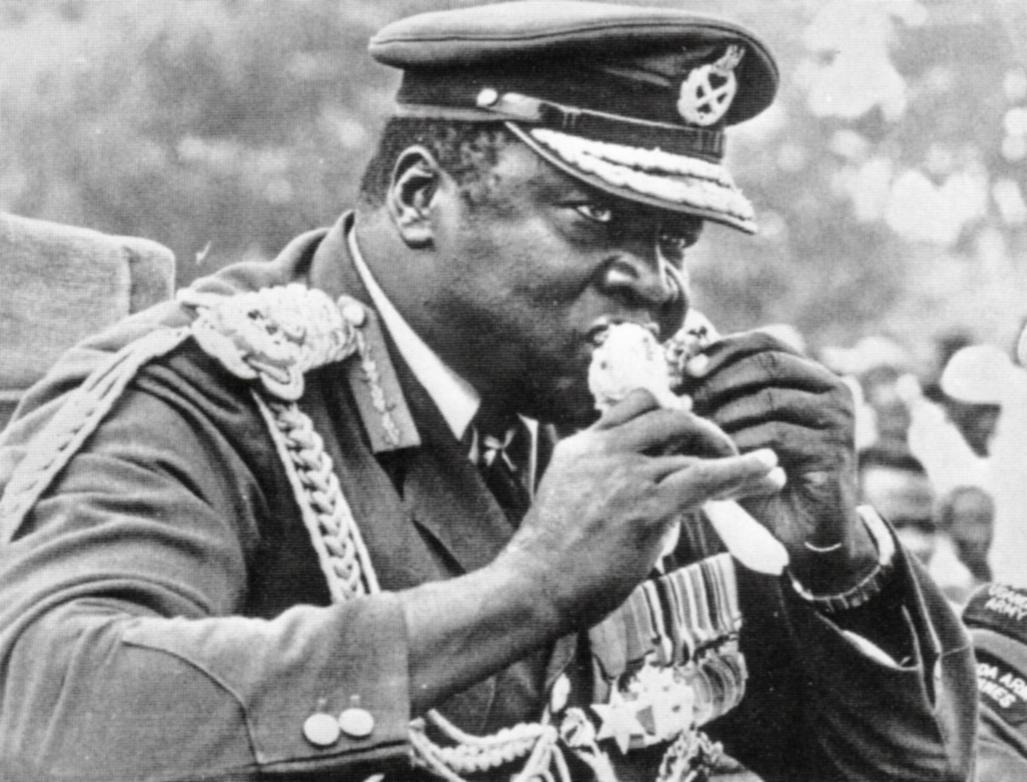
Uganda's dictator, Sgt. Idi
Amin, who claimed to be the conqueror of the British Empire
and heir to
the throne of Scotland. His regime was so brutal
that the world would no longer be able to ignore the failure widespread
in sub-Saharan Africa of the democratic hopes it once had for the subcontinent
Idi Amin forcing white Ugandans
to pledge alliegance to him with bowed head and bended knee
Although about to be defeated
in a coup against him, Amin poses with remnants of his army - 1979
Self-anointed Emperor of
the Central African Republic Sgt. Jean-Bedel Bokassa - 1977. His crowning ceremony cost
$22 million - paid for mostly by France. He would be deposed two
years later by French troops for his butchery of schoolchildren protesting
against his regime.
But by far the worst case of human oppression occurred in Ethiopia, under the Marxist regime of Col. Haile Mariam Mengistu
Col. Haile Mariam Mengistu,
enforcer of a Marxist regime in Ethiopia
... which succeeded in starving
his population
Mengistu with his friend Fidel Castro, who sent 17,000 Cuban troops to Ethiopia to defend Mengistu's Marxist program
Likewise ... military dictatorships grip of much of Latin America. The election of a Marxist regime in Chile (which the CIA tried to block) stirs thoughts in America of another Cuba – and America intervenes to put aside a democratically elected regime (this would not be the first time this has ever happened)
| Indeed, most of Latin America seems to continue to pursue "business as usual" with the economies run by a few wealthy families with close ties to the American business community, the military running the country with a mandate to keep everyone in line with this economically-based class system, the traditional Catholic Church investing everything with its religious endorsement, and would be revolutionary reformers in the wings waiting for the opportunity to throw out the whole corrupt system – and introduce a new "revolutionary" system of their own design. |
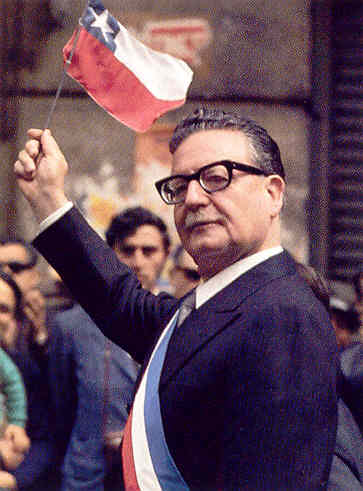
Marxist Salvador Allende
elected Chile's President – despite CIA efforts to disrupt the elections
September 1970
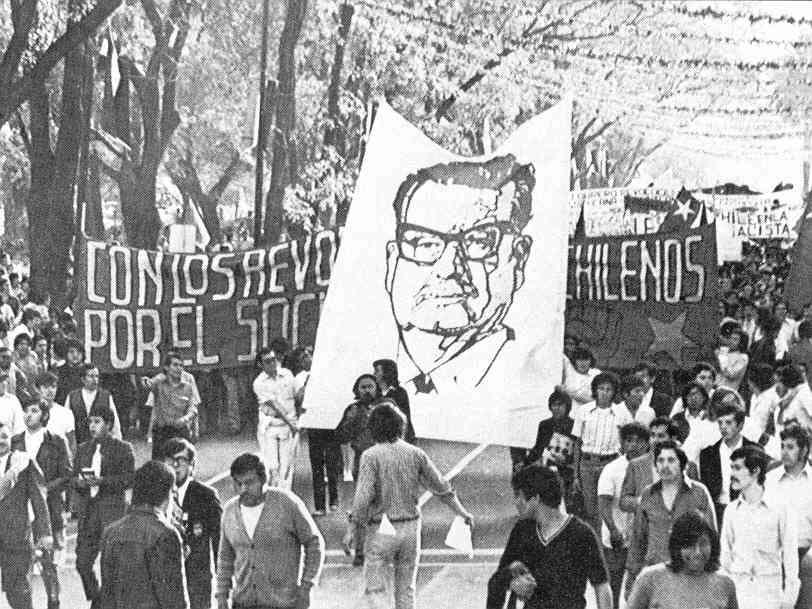
Pro-Salvador Allende
demonstrations
in Chile – just prior to his overthrow by the Chilean military (with help of the US
CIA)
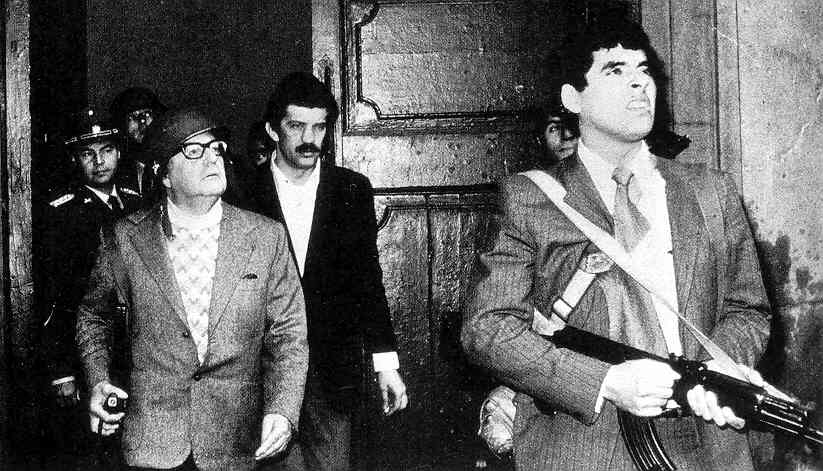
Chile's President Salvador
Allende under attack
by CIA-backed Pinochet forces
– September 11, 1973 (he committed suicide that
night)
Gen. Augusto Pinochet who
took control of Chile after ousting Pres. Allende – September 11,
1973
And in Argentina another conservative military government has taken control of the country – and imposed an ever-heavier repressive regime over the people – with horrible results.

Isabel Peron, who succeeded
to the Presidency of Argentina after the death of her husband in 1974 – until she was
removed
from power in 1976 when the military took control of the country
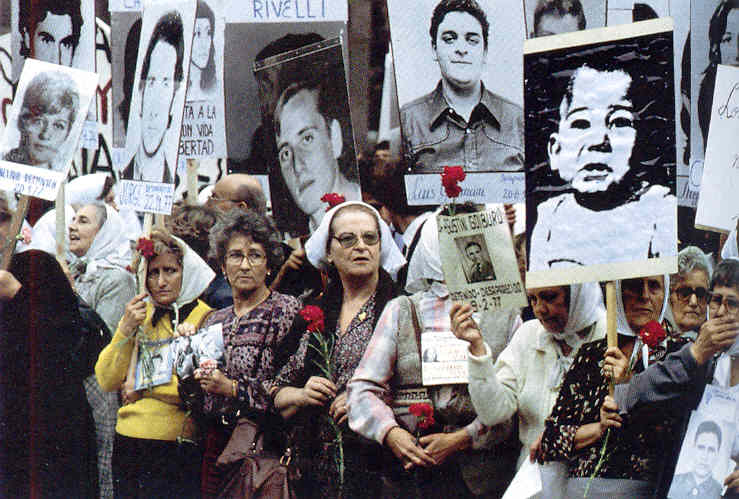
Mothers of the
desaparecidos
[disappeared ones] protesting against Argentina's military regime –
1976
Argentine mothers protesting the disappearance of their children by the military dictatorship – December 1979
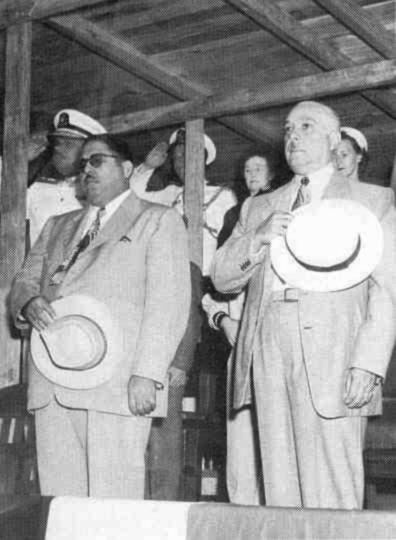
Rafael Trujillo (left) –
dictator of the Dominican Republic
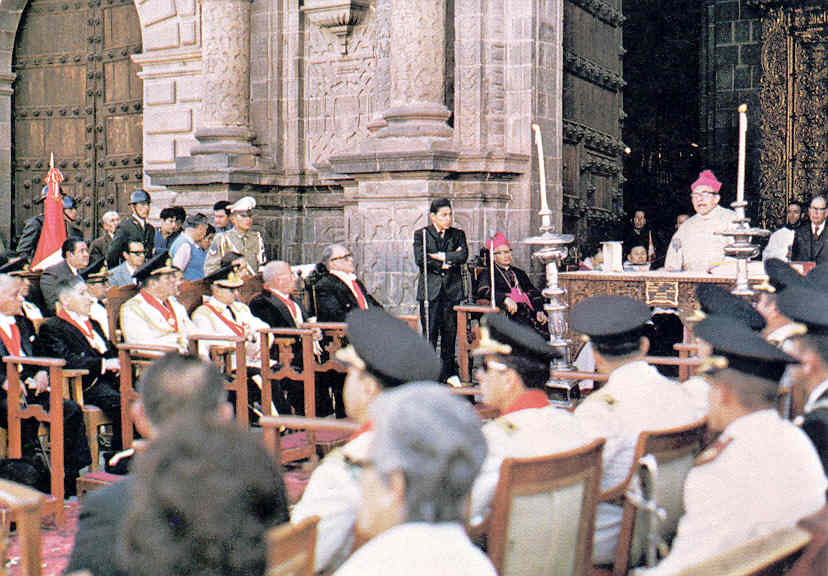
SOUTH AFRICA ... AND ITS DEEP RACIAL TENSIONS |
And racial conflict in South Africa, which has the added quality of White on Black oppression – with all of its highly charged symbolic value in post-colonial Africa ... and in an America still struggling with its own race relations – creates an eyesore for the Western hope for democracy.
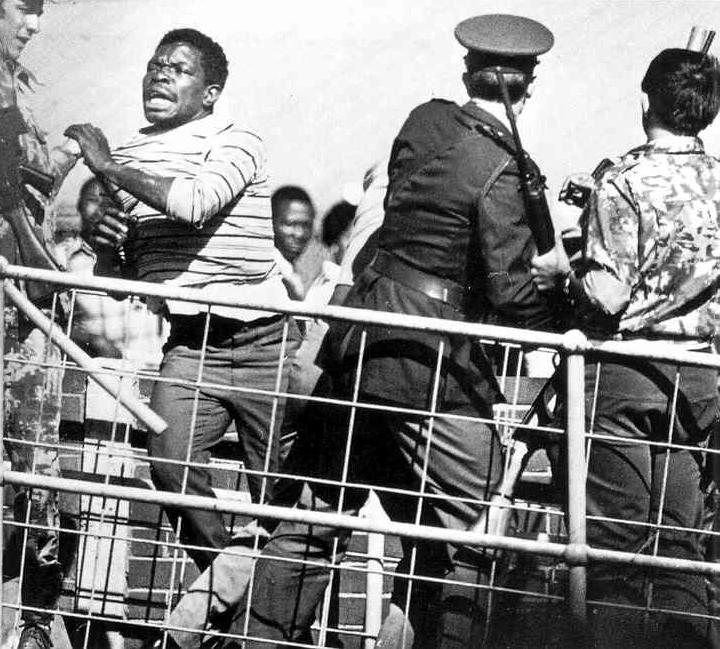
BUT
IN INDIA A VERY BRIGHT LIGHT APPEARS IN THE DARKNESS: MOTHER TERESA |
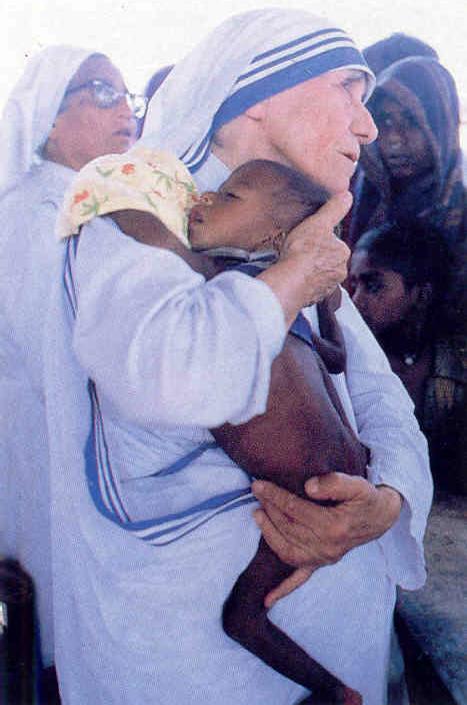
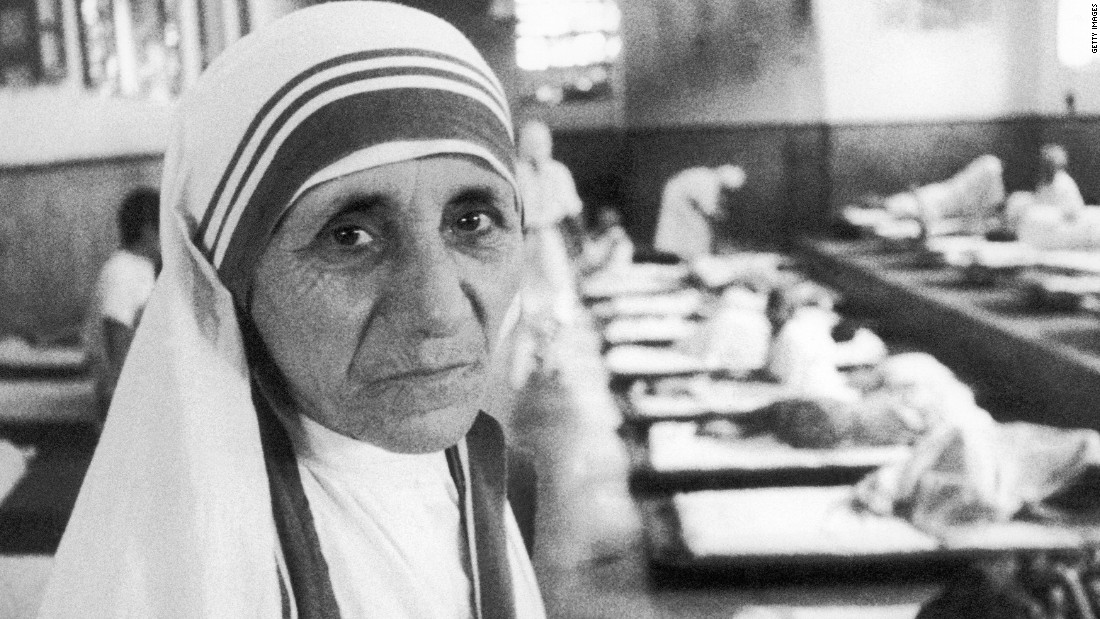
Mother Teresa (Agnes Gonsha Bouaxhiu) in Calcutta (Koltata) India

Go on to the next section: The Glory of Global Peace

